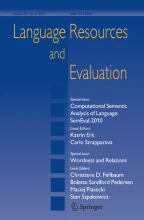Conclusion
The primary contribution of this study is advancing the use of computers to an additional field of art historical research. The study deals with an important body of material of the Pallava period from a temple which is one of the earliest structural temples of the Madras region in South India. There are no other comparable materials of this period. Further work on other important material of a later period is in progress. In addition to proportions, the distinctive costumes and jewellery (Lockwood, Siromoney and Dayanandan, 1974) depicted on the different categories will also be of value in restoration work.
Similar content being viewed by others
References
Anderson, T.W. and Rubin, H. (1956),Statistical Inference in Factor Analysis. Proceedings of the Third Berkeley Symposium on Mathematical Statistics and Probability. Berkely and Los Angeles: University of California Press. Vol. V.
Anderson, T.W. (1972),An Introduction to Multivariate Statistical Analysis. New Delhi: Wiley Eastern.
Banerjea, J.N. (1956),The Development of Hindu Iconography. Calcutta: University of Calcutta.
Devanathachari, D., ed. (1961),Silparatnam (Tamil). Tanjore.
Gopinatha Rao, T.A. (1920),Talamana orIconometry, Memoirs of the Archaeological Survey of India, No. 3.
Gorsuch, R.L. (1974),Factor Analysis. London: Saunders.
Guralnick, E. (1976), “The proportions of some archaic Greek sculptured figures: a computer analysis”,Computers and the Humanities, 10, 153–169.
Guralnick, E. (1978), “The properties of kouroi”,American Journal of Archaeology, 82, 461–472.
Jeffers, J.N.R. (1967), “Two case studies in the application of principal component analysis,”Applied Statistics 16, 223–236.
Kendall, M.G. and Stuart, A. (1968),The Advanced Theory of Statistics. Second Edition, London: Griffin. Vol. III.
Lockwood, M., Siromoney, G. and Dayanandan, P. (1974),Mahabalipuram Studies. Madras: Christian Literature Society.
Longhurst, A.H. (1930),Pallava Architecture, Part III,Memoirs of the Archaeological Survey of India, No. 40.
Singh, I.P. and Bhasin, M.K. (1968),Anthropometry. Delhi: Bharti Bhavan.
Siromoney, G., Bagavandas, M. and Govindaraju, S. (1979), “Computer analysis of Pallava sculptures: an iconometric study,” (submitted for publication).
Srinivasan, K.R. (1972),Temples of South India. Delhi: National Book Trust.
Rea, A. (1909),Pallava Architecture, Madras: Archaeological Survey of India.
Author information
Authors and Affiliations
Rights and permissions
About this article
Cite this article
Siromoney, G., Bagavandas, M. & Govindaraju, S. An application of component analysis to the study of South Indian sculptures. Comput Hum 14, 29–37 (1980). https://doi.org/10.1007/BF02395131
Issue Date:
DOI: https://doi.org/10.1007/BF02395131
